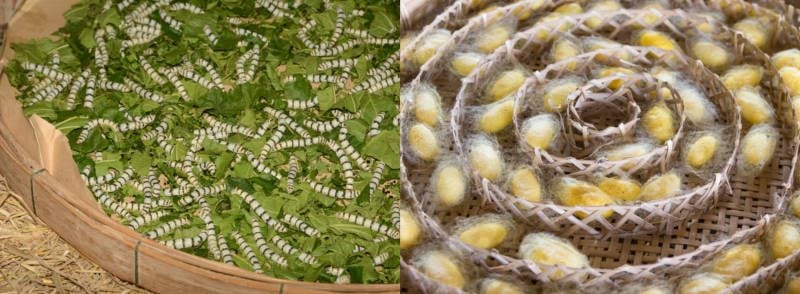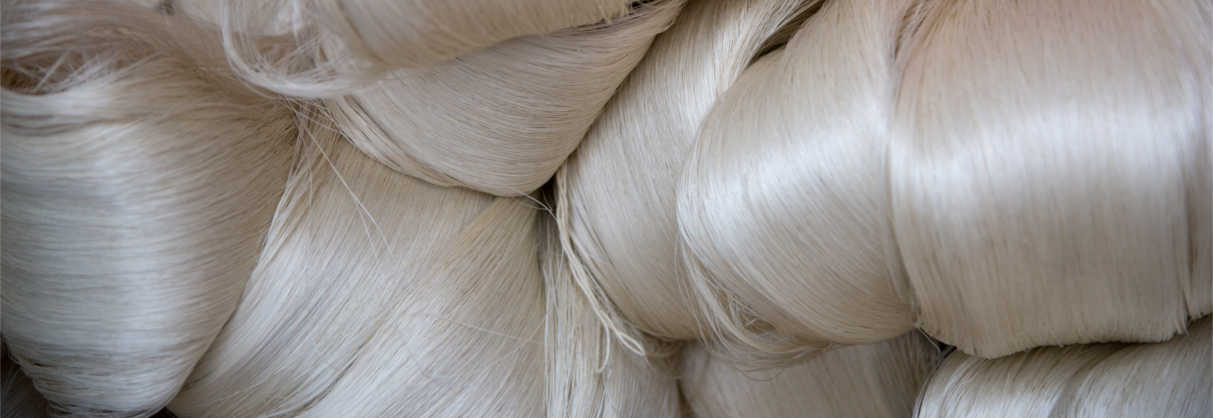Silk is a material in high demand, and so is a method to produce it artificially. A Swedish-German team of researchers is studying how to make silk with milk whey protein. Besides making way for a potentially cheaper process, artificial silk could have important medical applications.
Researchers from the Royal Institute of Technology (KTH) in Stockholm and the DESY research center in Hamburg are one step closer to understanding how to make better artificial silk. Published in the journal PNAS, their work provides insight on the self-assembly of proteins into fibrils and how it affects the material’s quality.
The source of protein chosen was milk whey, a common byproduct of the dairy industry, although I suppose other sources like biogas-derived protein or dried protein from an insect biorefinery could have potential as well.
In nature, of course, farmed silkworms spin silk out of evolutionary-optimized proteins, which organize in ways that confer both strength and flexibility to silk. For artificial spider silk, for example, the starting material of AMSilk, in Germany, are recombinant spider proteins produced by E. coli.

The structure of artificial and natural fibers are essentially different, however, and this is what the research team is studying in more detail. They spin the milk whey protein in a way that resembles how spiders produce their silk threads. It’s called hydrodynamic focusing, where naturally self-assembling protein nanofibrils are pumped through a small canal. Then, water enters from the sides squeezes the fibrils together until they stick together and form a fiber.
The work’s key finding was that a certain concentration of initial protein yields shorter and thinner fibrils, which surprisingly make for a better artificial silk than long fibers. The end result was silk fibers roughly five millimeters long and of medium quality.
From here, the process can be optimized to obtain silk fibers with better or even novel tailor-made properties. An obvious use for such technology would be to replace the current method of farmed silkworms, which is quite expensive. However, a more immediate area of application is probably medicine, where artificial silk could be used for tissue engineering, novel biosensors or self-dissolving wound dressings, which could even incorporate antibiotics.
Images from Mykola Ivashchenko, Watchares Hansawek, Apirak Wongpunsing /Shutterstock





